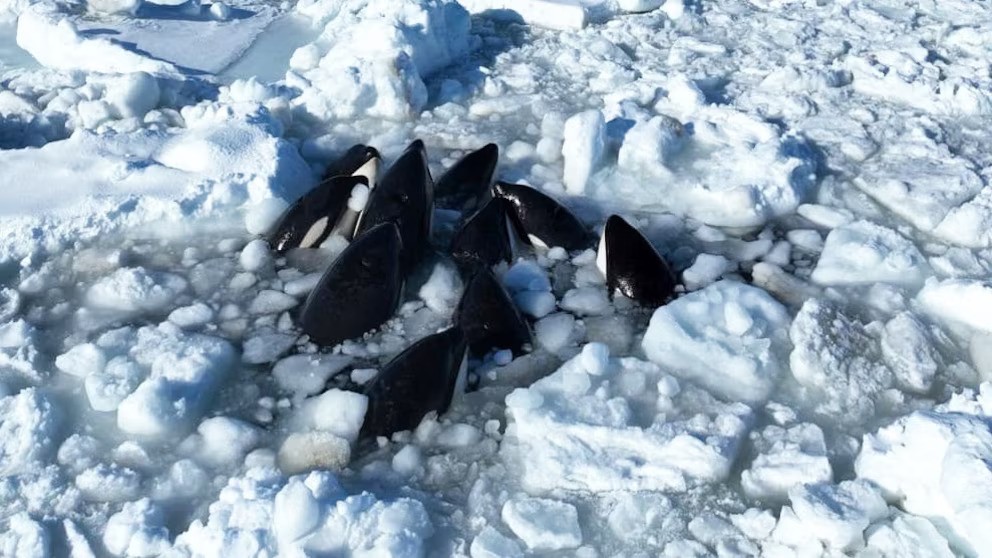Killer Whale Pod Vanishes After Struggle In Sea Of Ice Along Japan's Coast
Killer whale pod vanishes after struggle in sea of ice along Japan's coast. The pod of at least 10 killer whales vanished a day after becoming ensnared off Japan’s northern coast.
Author:Hajra ShannonReviewer:Paula M. GrahamFeb 08, 20241K Shares57.8K Views

Killer whale pod vanishes after struggle in sea of ice along Japan's coast. The pod of at least 10 killer whales vanished a day after becoming ensnared off Japan’s northern coast. A local fisherman near Rausu Town in eastern Hokkaido made the upsetting discovery, and he immediately alerted the Rausu Coast Guard Station on Tuesday morning.
Efforts to rescue the trapped orcas were hampered by the presence of ice flows preventing access to the whales. Despite using drones to monitor the situation on Tuesday, rescuers were unable to reach the stranded pod. Tragically, by Wednesday, the pod had disappeared entirely, leaving officials perplexed.
Authorities speculate that a lack of wind in the region may have contributed to the entrapment of the whales. Without sufficient wind to shift the ice flows, the pod remained trapped, unable to find a route to freedom.
The ice encircling Hokkaido's coast holds the distinction of being the lowest-latitude sea ice globally, yet officials note a decline in this phenomenon over recent years, attributed to Earth's warming climate.
During the distressing incident of the trapped whales, Wildlife Pro, conducting marine research nearby, managed to obtain drone footage of the orcas. The poignant 40-second video depicts the whales' struggles navigating between ice flows, a poignant testament to their plight.
“I saw about 13 killer whales with their heads sticking out of a hole in the ice,” the Wildlife Pro employee who filmed the video told NHK.
“They seemed to be struggling to breathe, and it looked like they included three or four calves.”
Rausu town officials recounted a haunting parallel to a 2005 incident where another group of killer whales became ensnared in drift ice off the town's coast, ultimately succumbing to their fate.
According to estimates provided by the National Oceanic and Atmospheric Administration (NOAA), there are around 50,000 killer whales that are dispersed over the oceans, making up the worldwide population. There have been multiple killer whale populations that have undergone reductions over the past few decades, and some of these populations are now considered endangered as a result of causes such as overfishing and the deterioration of habitat.
Some male killer whales have been known to live longer than the norm of thirty years, with some even reaching sixty years of age. However, the average lifespan of a male killer whale is approximately thirty years. However, according to the National Oceanic and Atmospheric Administration, there have been confirmed occurrences of certain females living to at least 90 years in the wild. Females, on the other hand, typically live approximately 50 years.

Hajra Shannon
Author

Paula M. Graham
Reviewer
Latest Articles
Popular Articles